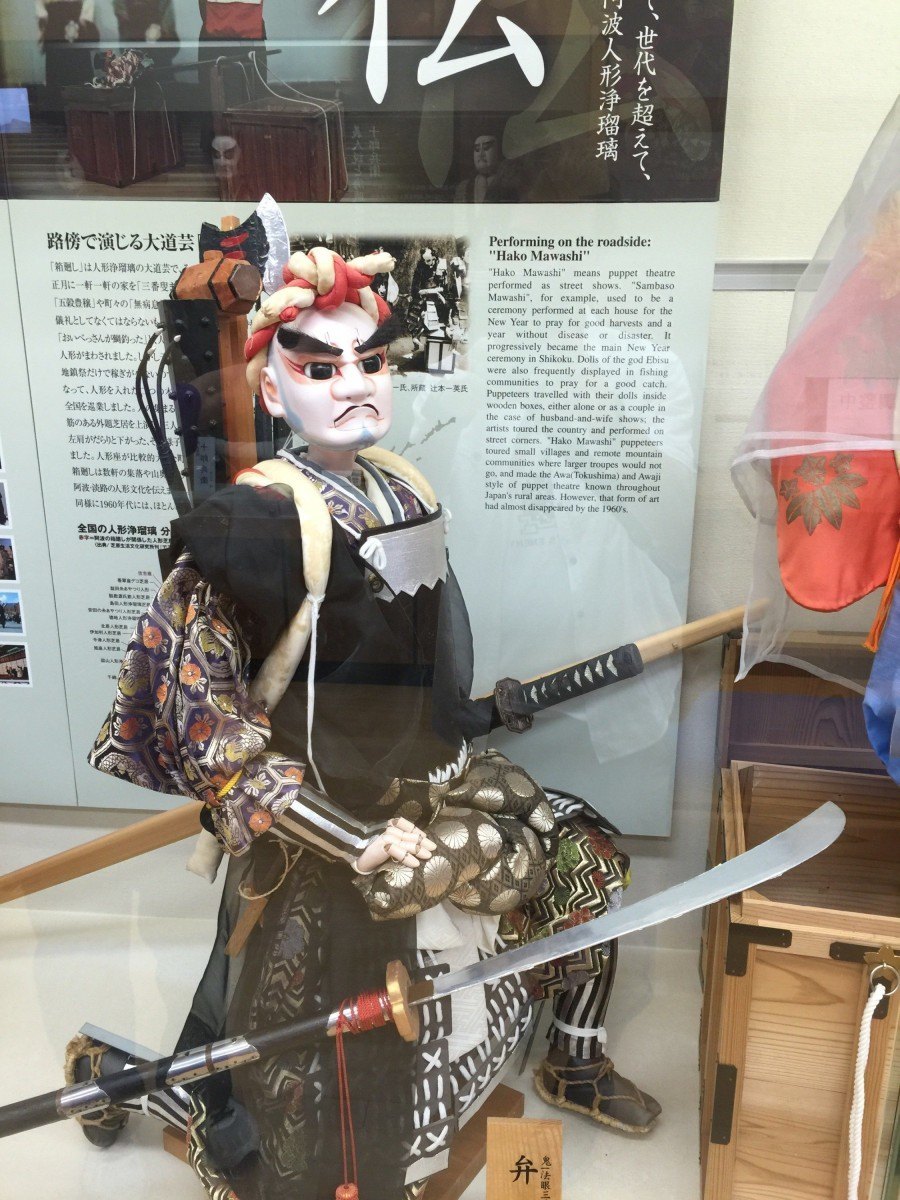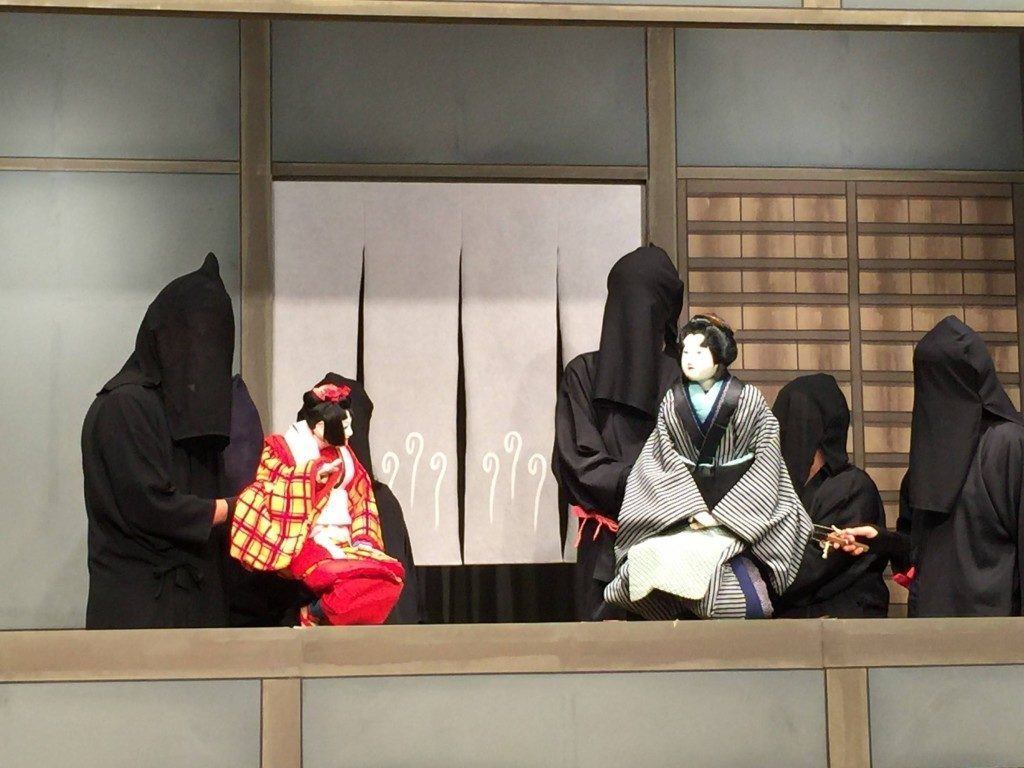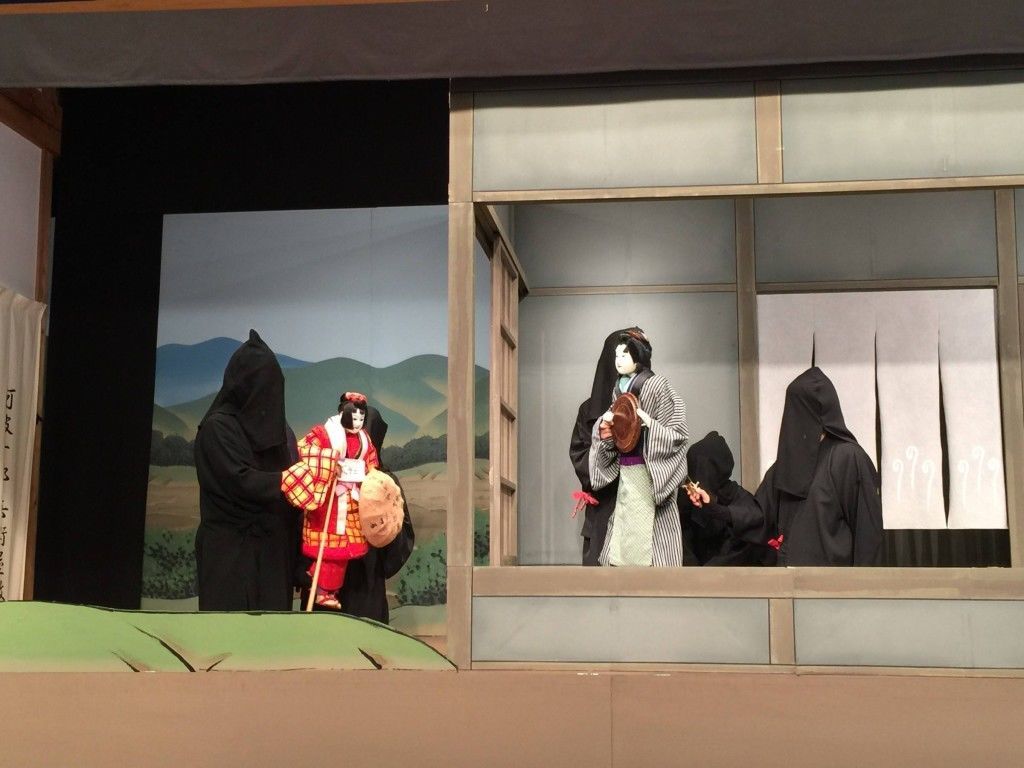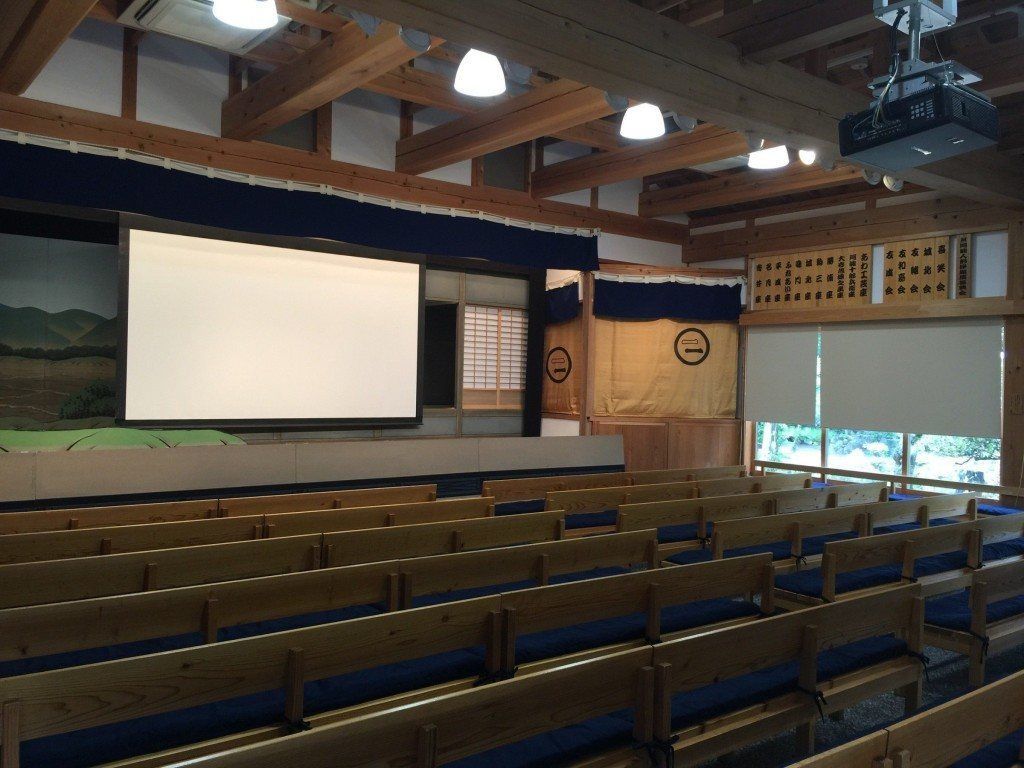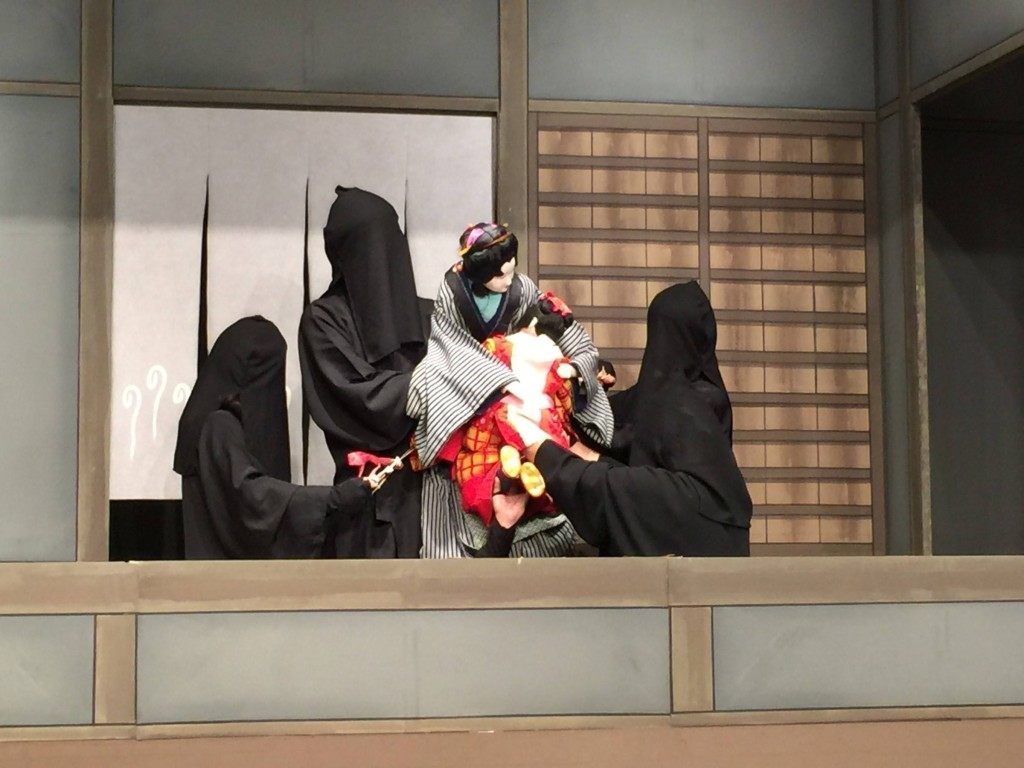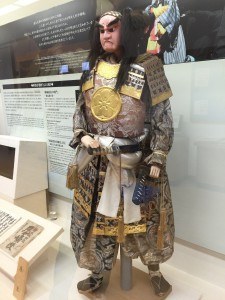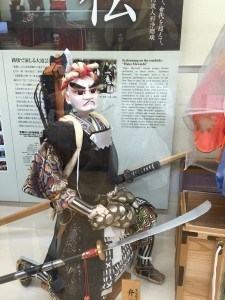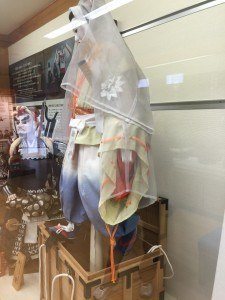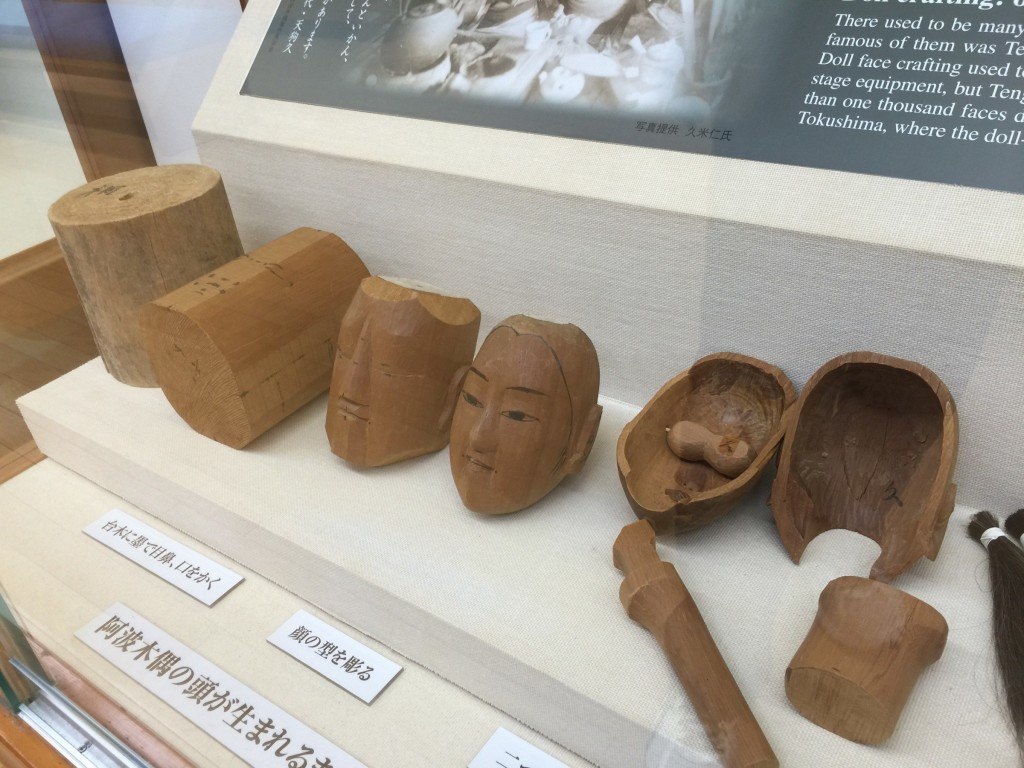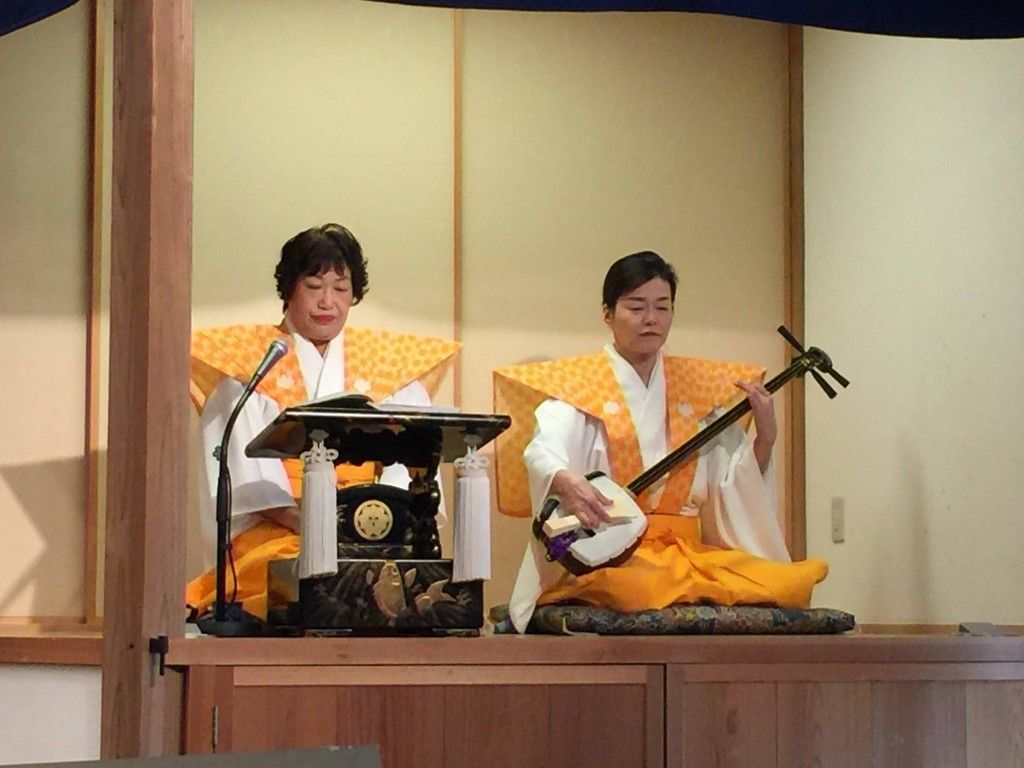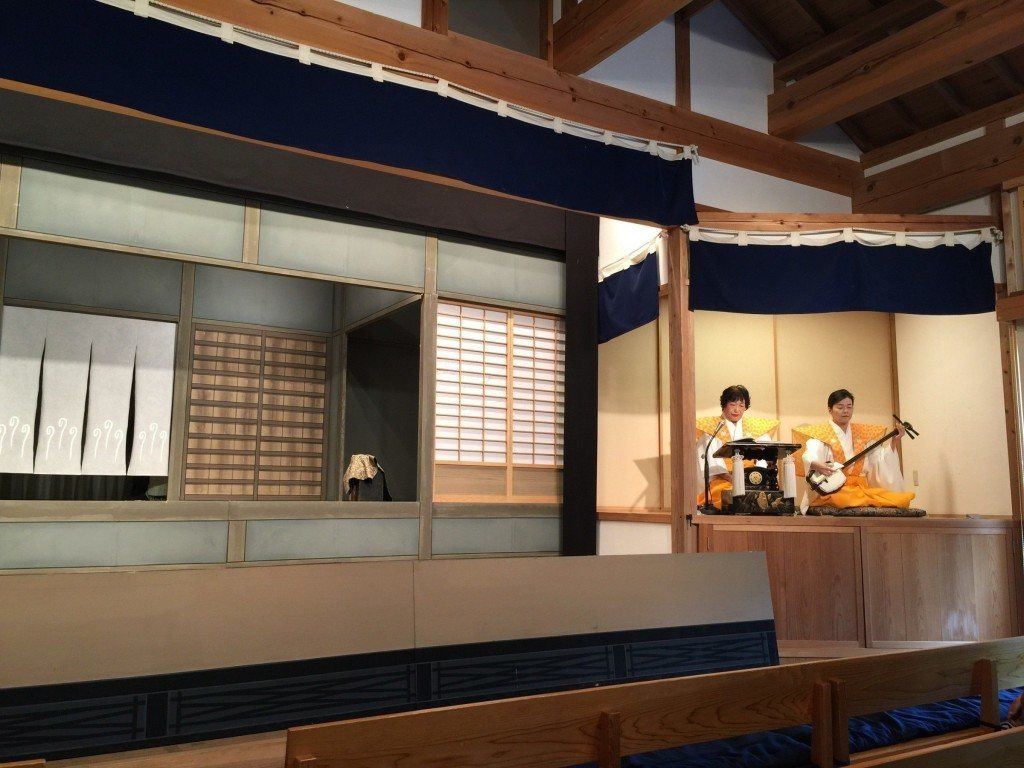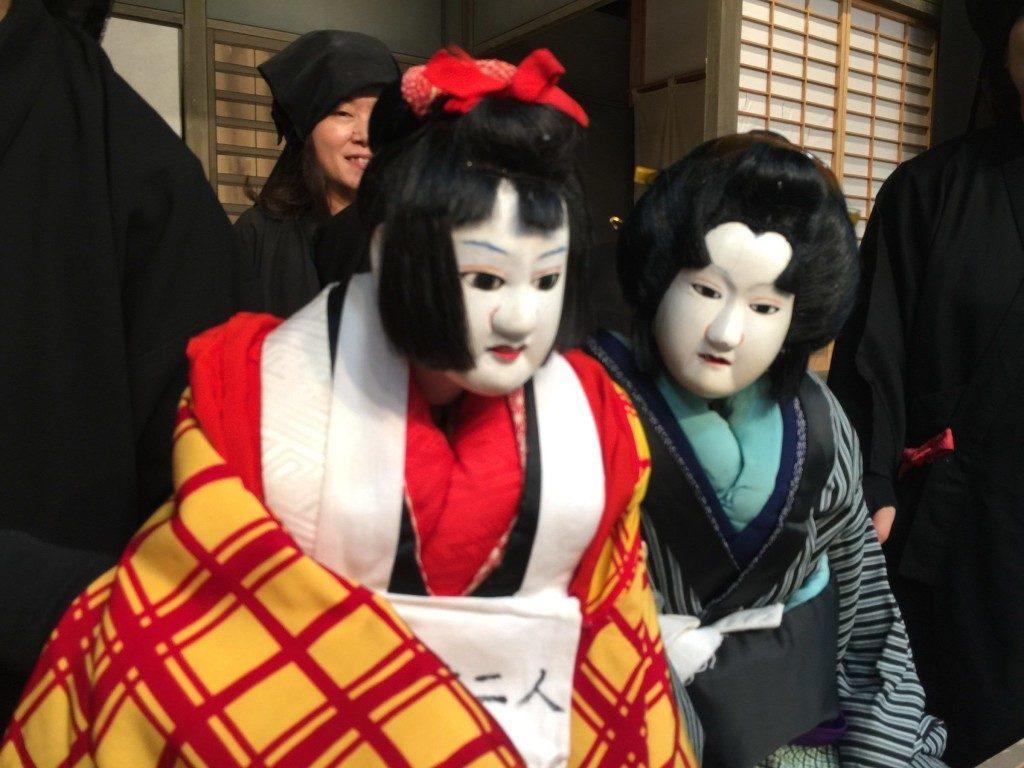Like this post? Help us by sharing it!
Often obscured by its more famous siblings, traditional Japanese puppet theatre, known as bunraku (or ningyo joruri), is an experience well-worth having during your stay in Japan. A single performance can be quirky and delightful one minute, and devastatingly emotional the next. But what is bunraku?
Along with the more well-known kabuki and noh, bunraku is recognized as a UNESCO Intangible Cultural Heritage. Though it shares that honor with world-famous dramatic Japanese arts, most would be hard-pressed to describe what bunraku actually is and why it is so popular here in Japan. Lucky for you, I’ve written a primer for even the most casual bunraku fan!
Bunraku is a traditional puppet theatre, mixing story, live music, and dramatic recitation. This all goes on while the puppeteers deftly manipulate large wooden puppets. Known as sannin-zukai (three puppeteers), these men and women cooperate to move each puppet throughout the performance. Unlike other puppets throughout the world, these wooden ningyo are not operated with strings; rather, the sannin-zukai all work together to move the puppet’s arms, legs, head, mouth, and even eyeballs. This incredibly difficult feat results in the realistic movements and facial expressions that bunraku is known for throughout Japan.
As you can see in the photos accompanying this blog, the puppeteers are in full view of the audience. They make no effort to hide the fact they are on the stage. While this can be off-putting at first, this is a cultural tradition that does have a purpose. Wearing all black, the puppeteers are symbolic to the audience; they are to be thought of as invisible to better immerse the visitor in the story. Each puppet requires three puppeteers to operate: one operating the right hand and head, one the left hand, and the last puppeteer, the feet and legs.
Each puppet is also deceptively heavy. Made of solid wood and roughly about half the size of a real person, the puppets were originally made to withstand quite a bit. Bunraku started out as an entertainment option for peasants around the turn of the 17th century with performances held outside in open-air farm villages and large fields. In Tokushima, on Shikoku Island, the bunraku troupes still use their own style of puppet, one that is even larger and made with glossy finishes so those in the back of the village can see it as well as those sitting in the front. With centuries of performances around the country, bunraku has certainly developed its own distinct styles over the years, with certain areas putting their own twists on the art.
Besides the talented puppeteers, the other main aspect of a bunraku performance is the music. Done live by usually only two people, the music is synchronised perfectly with the movements of the puppets on stage. The tayu, or narrator, sings, speaks, and chants all the lines of the play for every character. Using an impressive vocal range and employing different voices, the tayu expertly brings the viewer deeper into the story.
Along with the tayu is the shamisen player. A shamisen is a three-stringed guitar or banjo played by using a large, triangular-shaped pick. Traditionally used by kabuki theatres, in imperial court life, and by geisha, the shamisen today is practiced by many throughout the country. There are even touring rock bands using the ancient instrument!
Bunraku might not be for everyone, but I highly recommend you give it a chance. If you want a classic hero’s tale, a tragic lost love yarn, or an all-out comedy told in a uniquely Japanese way, give bunraku a shot!


